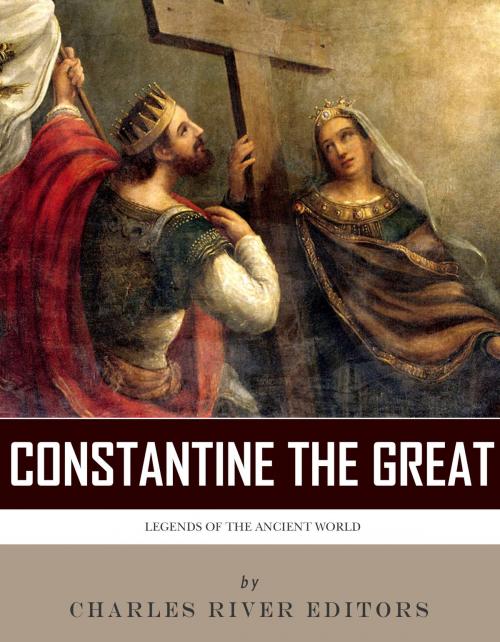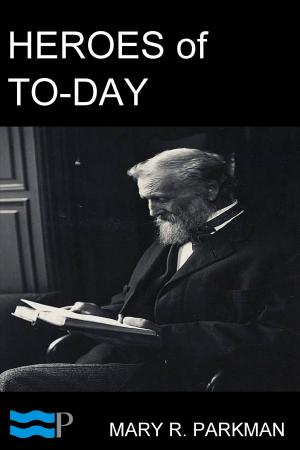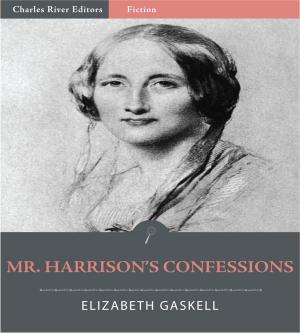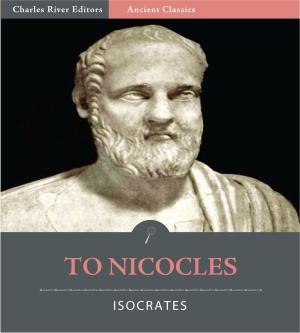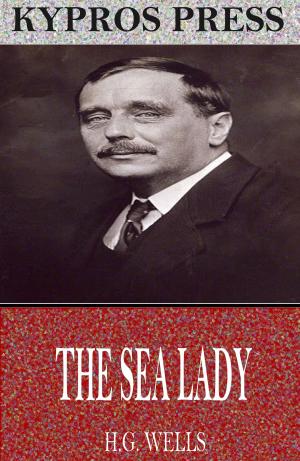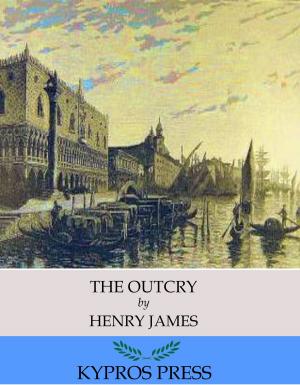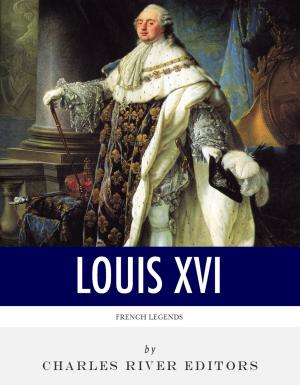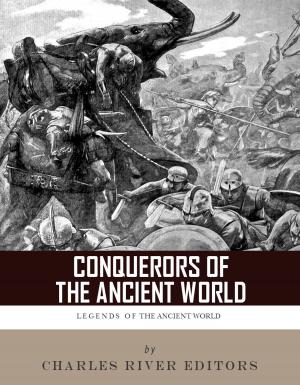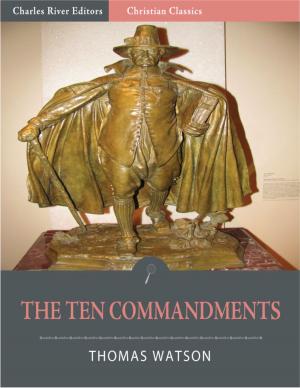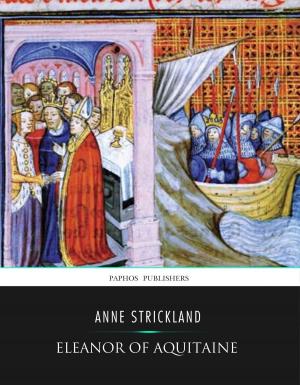Legends of the Ancient World: The Life and Legacy of Constantine the Great
Nonfiction, History, Ancient History, Rome, Biography & Memoir, Historical| Author: | Charles River Editors | ISBN: | 9781475323153 |
| Publisher: | Charles River Editors | Publication: | April 3, 2013 |
| Imprint: | Language: | English |
| Author: | Charles River Editors |
| ISBN: | 9781475323153 |
| Publisher: | Charles River Editors |
| Publication: | April 3, 2013 |
| Imprint: | |
| Language: | English |
*Discusses the legends surrounding Constantine's conversion to Christianity*Includes excerpts from Eusebius's biography of Constantine.*Includes pictures depicting important people, places, and events. *Includes a Bibliography for further reading.*Includes a Table of Contents. “By keeping the Divine faith, I am made a partaker of the light of truth: guided by the light of truth, I advance in the knowledge of the Divine faith. Hence it is that, as my actions themselves evince, I profess the most holy religion; and this worship I declare to be that which teaches me deeper acquaintance with the most holy God; aided by whose Divine power, beginning from the very borders of the ocean, I have aroused each nation of the world in succession to a well-grounded hope of security; so that those which, groaning in servitude to the most cruel tyrants and yielding to the pressure of their daily sufferings, had well nigh been utterly destroyed, have been restored through my agency to a far happier state.” Constantine the Great. It would be hard if not outright impossible to overstate the impact Roman Emperor Constantine I had on the history of Christianity, Ancient Rome, and Europe as a whole. Best known as Constantine the Great, the kind of moniker only earned by rulers who have distinguished themselves in battle and conquest, Constantine remains an influential and controversial figure to this day. He achieved enduring fame by being the first Roman emperor to personally convert to Christianity, and for his notorious Edict of Milan, the imperial decree which legalized the worship of Christ and promoted religious freedom throughout the Empire. More than 1500 years after Constantines death, Abdu'l-Bahá, the head of the Bahá'í Faith, wrote, “His blessed name shines out across the dawn of history like the morning star, and his rank and fame among the world's noblest and most highly civilized is still on the tongues of Christians of all denominations”Moreover, even though he is best remembered for his religious reforms and what his (mostly Christian) admirers described as his spiritual enlightenment, Constantine was also an able and effective ruler in his own right. Rising to power in a period of decline and confusion for the Roman Empire, he gave it a new and unexpected lease on life by repelling the repeated invasions of the Germanic tribes on the Northern and Eastern borders of the Roman domains, even going so far as to re-expand the frontier into parts of Trajans old conquest of Dacia (modern Romania), which had been abandoned as strategically untenable. However, it can be argued that despite his military successes the most notable of which occurred fighting for supremacy against other Romans Constantine may well have set the stage for the ultimate collapse of the Roman Empire as it had existed up until that point. It was Constantine who first decided that Rome, exposed and vulnerable near the gathering masses of barbarians moving into Germania and Gaul, was a strategically unsafe base for the Empire, and thus expanded the city of New Rome on the Dardanelles straits, creating what eventually became Constantinople. By moving the political, administrative and military capital of the Empire from Rome to the East, as well as the Imperial court with all its attendant followers, Constantine laid the groundwork for the eventual schism which saw the two parts of the Roman Empire become two entirely separate entities, go their own way, and eventually collapse piecemeal under repeated waves of invasion.Legends of the Ancient World: The Life and Legacy of Constantine the Great chronicles the life, legends, and legacy of the famous Roman emperor. Along with pictures depicting important people and places, as well as a bibliography and Table of Contents, you will learn about Constantine the Great like you never have before, in no time at all.
*Discusses the legends surrounding Constantine's conversion to Christianity*Includes excerpts from Eusebius's biography of Constantine.*Includes pictures depicting important people, places, and events. *Includes a Bibliography for further reading.*Includes a Table of Contents. “By keeping the Divine faith, I am made a partaker of the light of truth: guided by the light of truth, I advance in the knowledge of the Divine faith. Hence it is that, as my actions themselves evince, I profess the most holy religion; and this worship I declare to be that which teaches me deeper acquaintance with the most holy God; aided by whose Divine power, beginning from the very borders of the ocean, I have aroused each nation of the world in succession to a well-grounded hope of security; so that those which, groaning in servitude to the most cruel tyrants and yielding to the pressure of their daily sufferings, had well nigh been utterly destroyed, have been restored through my agency to a far happier state.” Constantine the Great. It would be hard if not outright impossible to overstate the impact Roman Emperor Constantine I had on the history of Christianity, Ancient Rome, and Europe as a whole. Best known as Constantine the Great, the kind of moniker only earned by rulers who have distinguished themselves in battle and conquest, Constantine remains an influential and controversial figure to this day. He achieved enduring fame by being the first Roman emperor to personally convert to Christianity, and for his notorious Edict of Milan, the imperial decree which legalized the worship of Christ and promoted religious freedom throughout the Empire. More than 1500 years after Constantines death, Abdu'l-Bahá, the head of the Bahá'í Faith, wrote, “His blessed name shines out across the dawn of history like the morning star, and his rank and fame among the world's noblest and most highly civilized is still on the tongues of Christians of all denominations”Moreover, even though he is best remembered for his religious reforms and what his (mostly Christian) admirers described as his spiritual enlightenment, Constantine was also an able and effective ruler in his own right. Rising to power in a period of decline and confusion for the Roman Empire, he gave it a new and unexpected lease on life by repelling the repeated invasions of the Germanic tribes on the Northern and Eastern borders of the Roman domains, even going so far as to re-expand the frontier into parts of Trajans old conquest of Dacia (modern Romania), which had been abandoned as strategically untenable. However, it can be argued that despite his military successes the most notable of which occurred fighting for supremacy against other Romans Constantine may well have set the stage for the ultimate collapse of the Roman Empire as it had existed up until that point. It was Constantine who first decided that Rome, exposed and vulnerable near the gathering masses of barbarians moving into Germania and Gaul, was a strategically unsafe base for the Empire, and thus expanded the city of New Rome on the Dardanelles straits, creating what eventually became Constantinople. By moving the political, administrative and military capital of the Empire from Rome to the East, as well as the Imperial court with all its attendant followers, Constantine laid the groundwork for the eventual schism which saw the two parts of the Roman Empire become two entirely separate entities, go their own way, and eventually collapse piecemeal under repeated waves of invasion.Legends of the Ancient World: The Life and Legacy of Constantine the Great chronicles the life, legends, and legacy of the famous Roman emperor. Along with pictures depicting important people and places, as well as a bibliography and Table of Contents, you will learn about Constantine the Great like you never have before, in no time at all.
